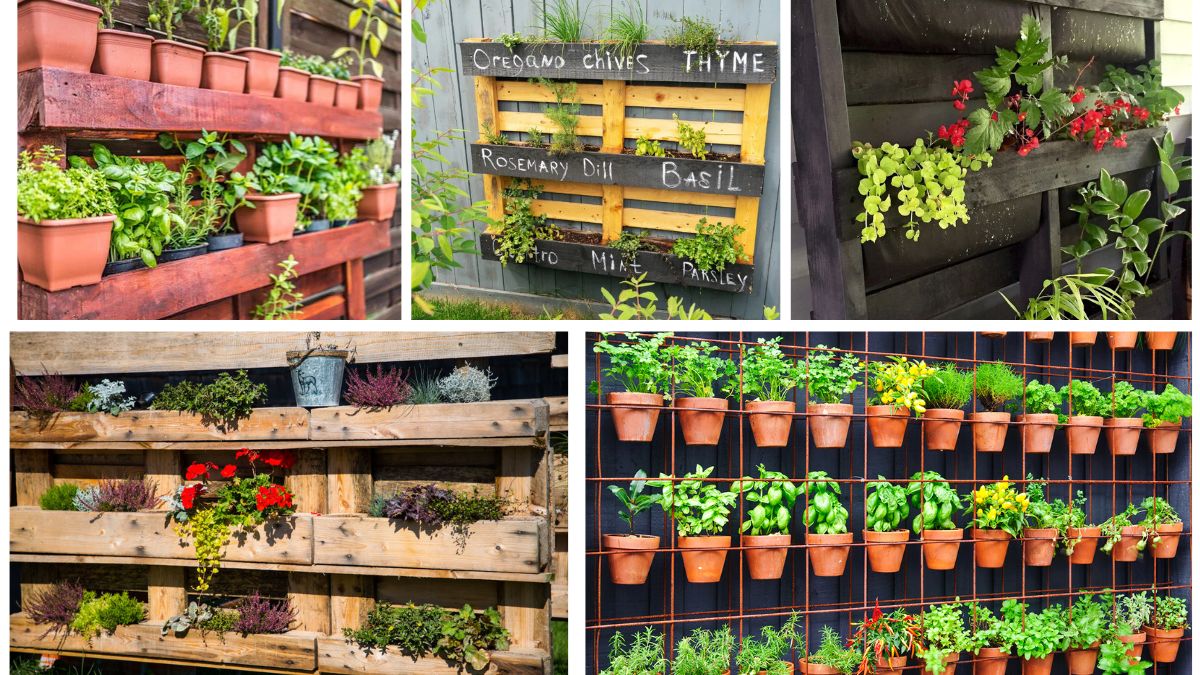In today’s world of compact living spaces and urban lifestyles, gardening is evolving beyond traditional plots and raised beds. One of the most creative and practical trends gaining popularity is vertical pallet gardening. By repurposing wooden pallets, you can transform an ordinary wall or fence into a lush, green vertical garden. Not only does this save space, but it also creates a striking visual element while supporting eco-friendly living.
The success of a vertical pallet garden depends on choosing the right plants—those that thrive in small pockets of soil, adapt well to vertical growth, and offer beauty or utility. This article explores five plants perfect for vertical pallet gardens, detailing their features, growing requirements, and tips to make your living wall thrive.
Why Choose Vertical Pallet Gardens?
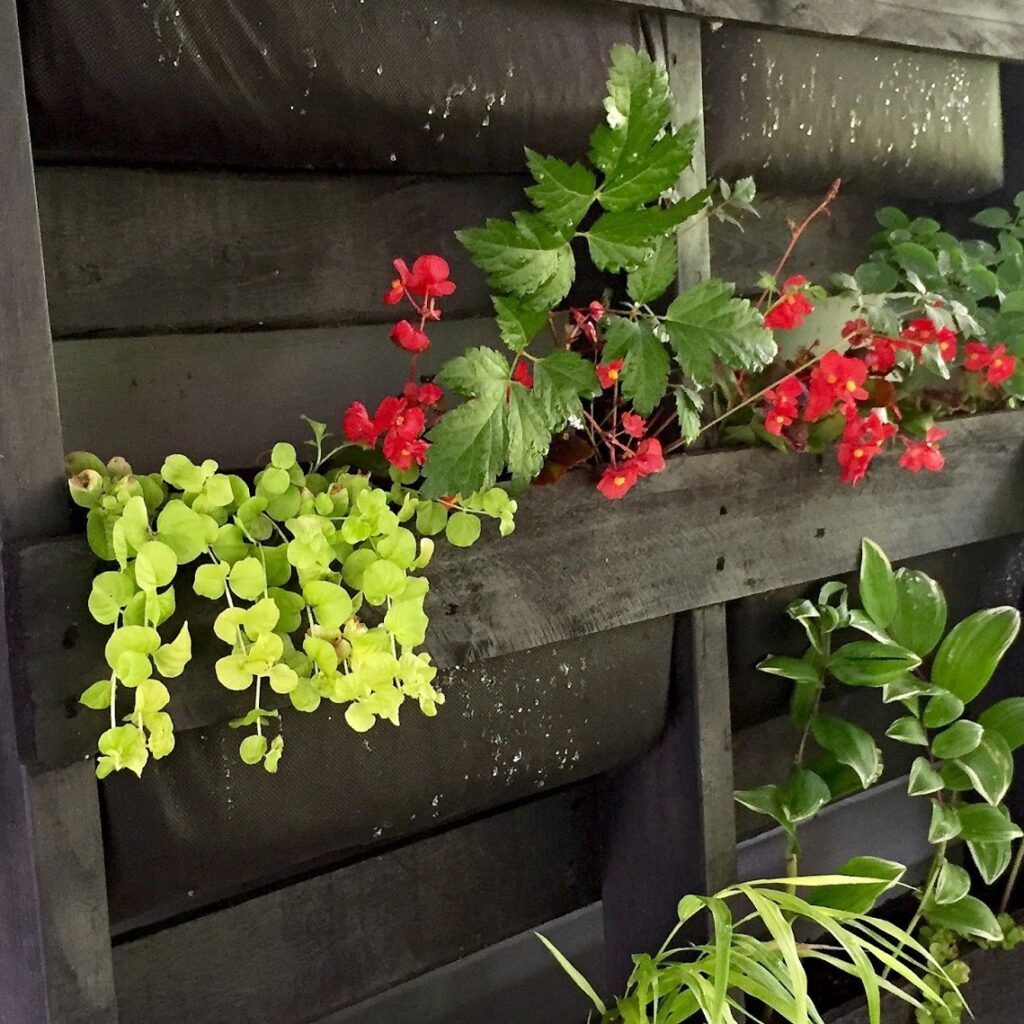
Before diving into plant choices, let’s look at why pallet gardens are so appealing:
- Space-Saving: Ideal for balconies, patios, and small yards.
- Eco-Friendly: Repurposes old pallets, reducing waste.
- Aesthetic Value: Creates living walls that beautify bland outdoor spaces.
- Practical Gardening: Lets you grow herbs, flowers, and vegetables even in tight areas.
- Easy Maintenance: Plants are raised off the ground, reducing pests and weeds.
With these benefits, pallet gardens are a perfect blend of function and creativity.
1. Strawberries (Fragaria × ananassa)
Few plants are as rewarding in vertical gardens as strawberries. Compact in size yet generous in fruit, strawberries thrive in pallet gardens where their runners can spill over the sides, creating a cascade of greenery and red berries.
Features
- Low-growing perennial that produces small white flowers followed by juicy red fruits.
- Decorative foliage makes it attractive even when not fruiting.
- Ideal for hanging or spilling down the pallet edges.
Growing Conditions
- Soil: Rich, well-drained soil with organic matter.
- Watering: Keep soil consistently moist but avoid waterlogging.
- Sunlight: At least 6 hours of full sun daily.
Care Tips
- Fertilize with a balanced organic fertilizer every few weeks during fruiting season.
- Remove runners if you want larger fruits; leave them if you want the plant to spread.
- Replace plants every 2–3 years for best yields.
Why Strawberries?
They add both beauty and delicious harvests, making them a practical and decorative choice for pallet gardens.
2. Petunias (Petunia spp.)
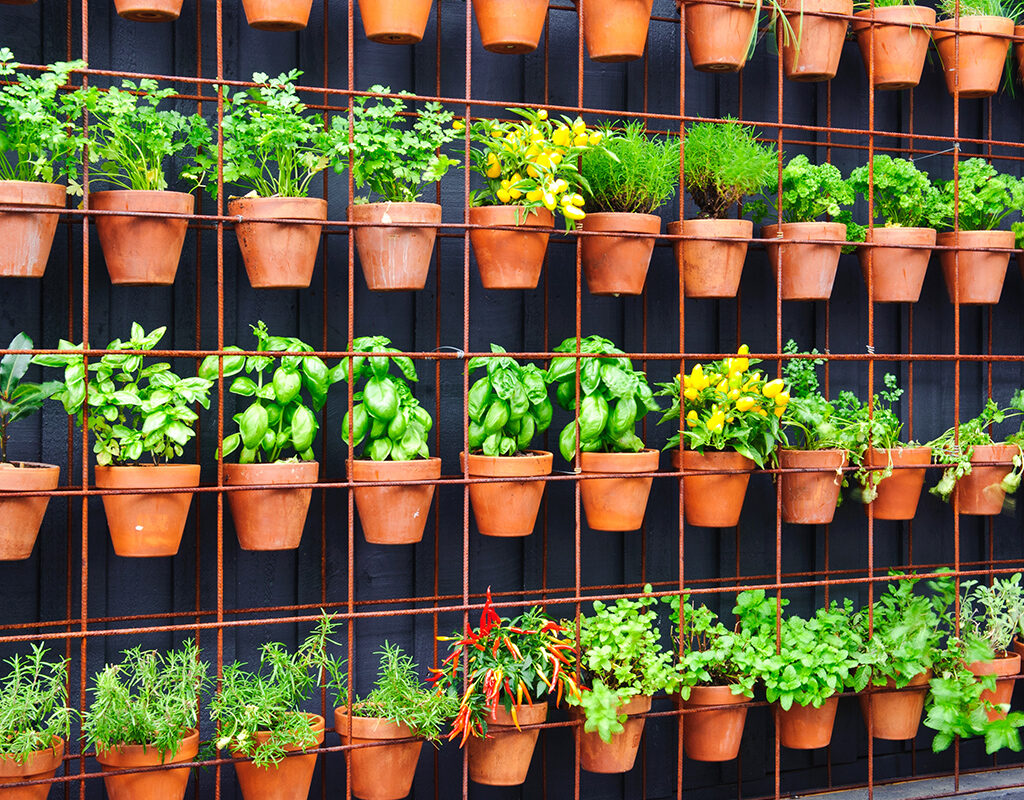
If you’re aiming for a splash of color, petunias are an excellent choice. Known for their long blooming season and vibrant flowers, they transform pallets into living canvases of pink, purple, red, white, and even striped blooms.
Features
- Annual plants with funnel-shaped flowers.
- Available in trailing varieties perfect for vertical growth.
- Long blooming period from spring until frost.
Growing Conditions
- Soil: Light, fertile, and well-drained.
- Watering: Moderate; keep soil evenly moist but not soggy.
- Sunlight: Full sun (6–8 hours daily) for abundant flowering.
Care Tips
- Deadhead spent flowers regularly to encourage continuous blooms.
- Fertilize with liquid plant food every 2–3 weeks.
- Use trailing or cascading petunia varieties for the most dramatic effect.
Why Petunias?
They bring instant color and vibrancy to vertical gardens, making pallets a true focal point.
3. Lettuce (Lactuca sativa)
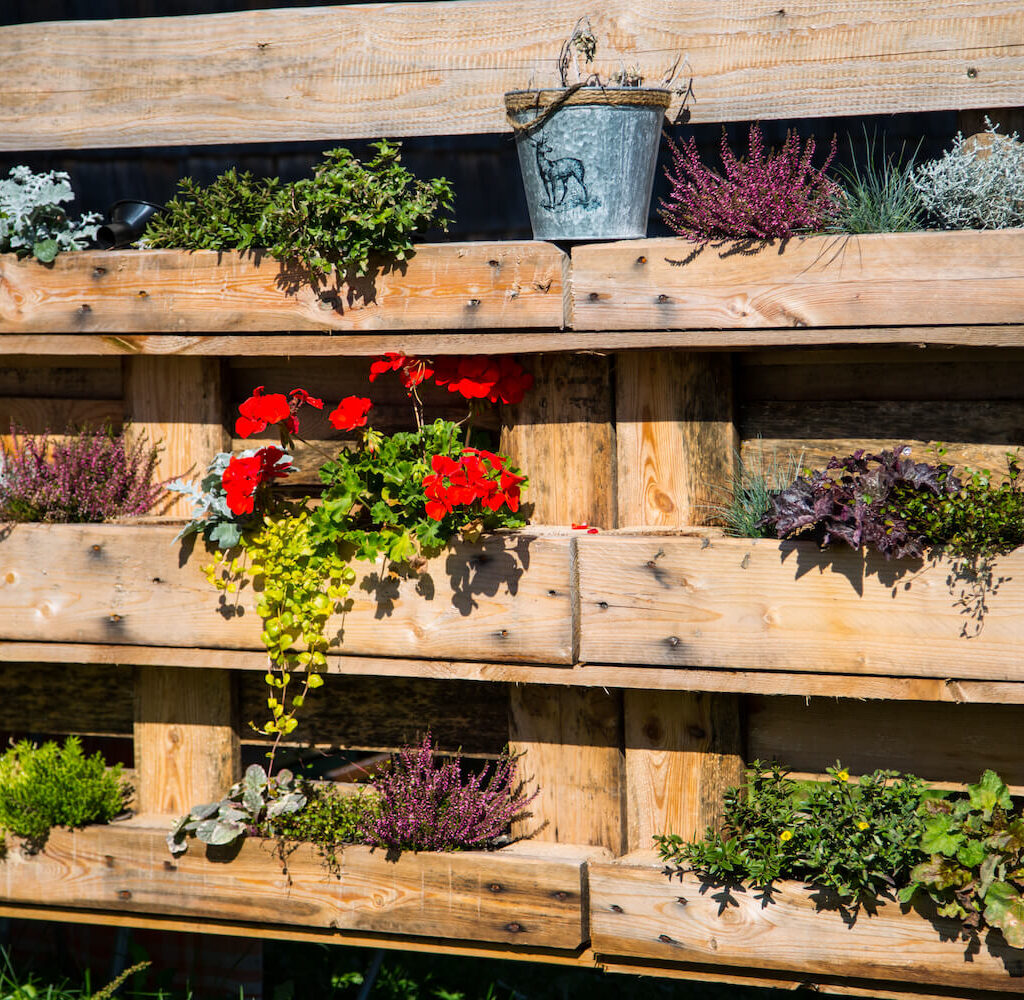
If your goal is fresh food from your garden, lettuce is one of the easiest and most rewarding crops for pallet gardens. Compact and fast-growing, it thrives in shallow soil pockets, making it a perfect fit.
Features
- Cool-season leafy vegetable with multiple varieties (butterhead, romaine, leaf).
- Harvest can begin just weeks after planting.
- Grows well in tight spaces, allowing multiple heads in one pallet.
Growing Conditions
- Soil: Loose, fertile, and rich in organic matter.
- Watering: Keep soil consistently moist, as lettuce has shallow roots.
- Sunlight: Prefers partial shade in hot climates; full sun in cooler seasons.
Care Tips
- Harvest outer leaves regularly to extend the growing season.
- Re-seed every few weeks for a continuous supply.
- Protect from excessive heat, which can cause bolting.
Why Lettuce?
It’s a practical and healthy choice that provides fresh greens for salads right from your pallet garden.
4. Nasturtiums (Tropaeolum majus)
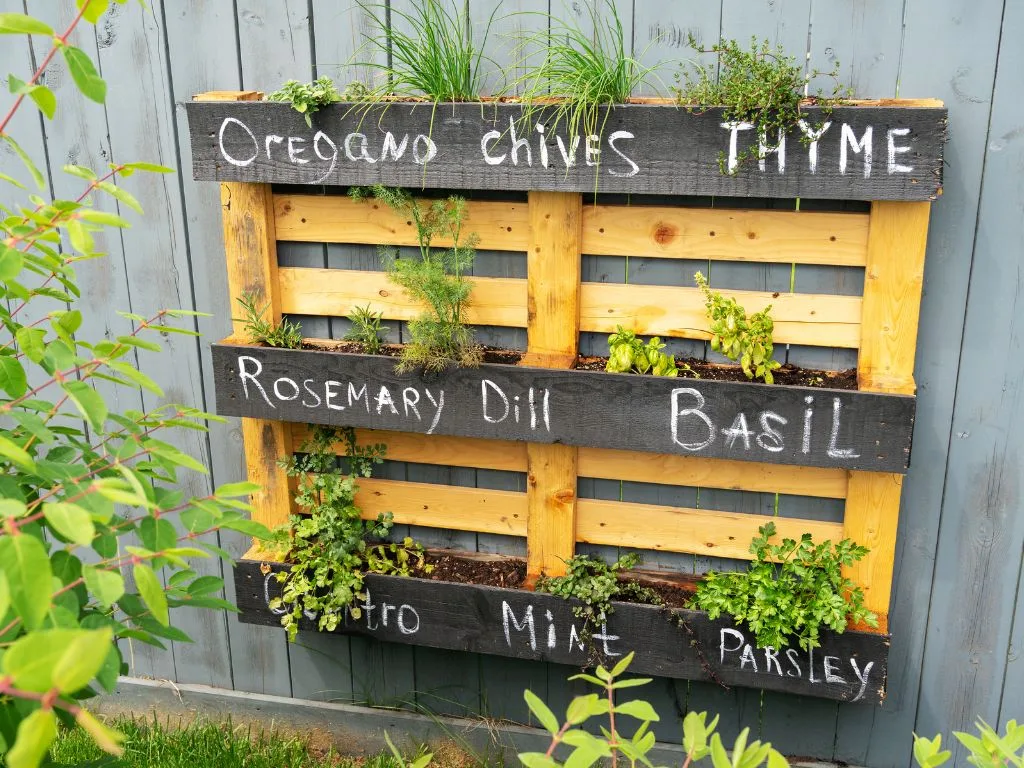
For those seeking edible beauty, nasturtiums are unbeatable. These flowering plants offer bright orange, red, and yellow blooms while doubling as edible flowers and leaves with a peppery flavor.
Features
- Fast-growing annual with trailing or climbing habit.
- Vibrant flowers that attract pollinators like bees and butterflies.
- Both flowers and leaves are edible and can be used in salads.
Growing Conditions
- Soil: Prefers poorer, well-drained soils (too rich soil reduces flowering).
- Watering: Moderate; avoid overwatering.
- Sunlight: Full sun promotes best blooming, though they tolerate partial shade.
Care Tips
- Pinch back stems to encourage bushier growth.
- Train trailing stems to cascade over pallet edges.
- Minimal fertilization is required.
Why Nasturtiums?
They add color, attract pollinators, and are edible, making them both decorative and useful in a vertical garden.
5. Herbs (Basil, Mint, Thyme, Parsley)
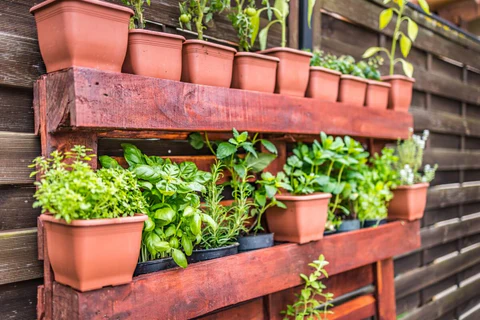
Herbs are the backbone of many vertical gardens, and pallet gardens are no exception. Compact, flavorful, and fragrant, herbs thrive in limited spaces and are perfect for easy kitchen access.
Features
- Wide variety of culinary herbs can be grown in small soil pockets.
- Basil, mint, thyme, parsley, oregano, and cilantro are all excellent choices.
- Many herbs emit fragrant aromas, adding sensory appeal.
Growing Conditions
- Soil: Light, well-drained, enriched with compost.
- Watering: Moderate; most herbs dislike waterlogged soil.
- Sunlight: Most herbs prefer full sun (6–8 hours daily).
Care Tips
- Regularly pinch or trim herbs to encourage new growth.
- Group herbs with similar watering needs together.
- Replace annual herbs each season for continuous supply.
Why Herbs?
They’re practical, fragrant, and flavorful, turning a pallet garden into a mini kitchen garden.
Tips for a Thriving Vertical Pallet Garden
- Choose the Right Pallet: Ensure it’s untreated wood to avoid harmful chemicals.
- Line the Pallet: Use landscape fabric to hold soil in place while allowing drainage.
- Secure Plants: Start with the pallet lying flat until plants establish roots, then tilt upright.
- Watering: Vertical gardens dry out faster—regular watering is essential. Drip irrigation or self-watering systems help.
- Fertilization: Use slow-release fertilizers or compost for long-term nutrition.
- Sun Positioning: Place the pallet in a spot that matches the sunlight needs of your chosen plants.
Conclusion
Vertical pallet gardens are more than a trend—they’re a creative solution for modern living. By growing plants like strawberries, petunias, lettuce, nasturtiums, and herbs, you can create a garden that is both visually stunning and functional. These plants adapt beautifully to vertical spaces, offering cascading flowers, edible harvests, and lush greenery.
With the right care, your pallet garden can transform a plain wall into a vibrant vertical oasis. Whether you’re growing fresh herbs for the kitchen, strawberries for your family, or flowers for pollinators, vertical gardening opens endless possibilities in compact spaces.
So, grab a pallet, choose your plants, and let your garden grow upwards—bringing motion, color, and flavor to your living space.
